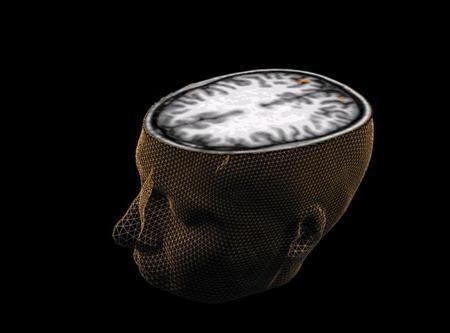
A college dropout from Washington has turned into a mathematical genius after receiving severe brain injuries.
Jason Padgett, a furniture salesman from Tacoma, Washington, was least interested in academics and had only pre-algebra skills. In 2002, two men attacked him outside a karaoke bar which left him with a severe concussion and a bleeding kidney. He also suffered from post-traumatic stress disorder after the attack.
But the incident turned him into a mathematical wizard, reported Live Science. Padgett's perception of the world changed after the attack. He developed an ability to see the world in geometrical shapes.
He started drawing complex geometric shapes, but he didn't understand the equations they signified. One day, a physicist saw him drawing shapes at a mall and he encouraged Padgett to go back to college, where he is now studying number theory.
As scientists came to know about Padgett's mathematical skills, they decided to find out what happened to his brain that made him a genius. Padgett is one of those rare individuals having savant syndrome with mathematical synesthesia. Savant syndrome is a condition in which a person has physical or mental disability, but show prodigious abilities in a particular field. Most of those suffering from savant syndrome have developed musical or artistic abilities, but very few have developed mathematical skills.
Synesthesia is a neurological condition of mixed senses. In case of Padgett, he saw geometrical shapes when he was shown mathematical formulas.
To understand how Padgett acquired his savant skills with mathematical synesthesia, Berit Brogaard, a philosophy professor now at the University of Miami, in Coral Gables, Florida, and her colleagues used functional magnetic resonance imaging (fMRI) and scanned his brain. The scans showed that his left parietal cortex, behind the crown of the head, lit up most strongly and there was some activation in areas involving visual memory, sensory processing, planning, attention and emotion, reported Live Science.
To find out which particular areas are causing the mathematical synesthesia, Brogaard's team used transcranial magnetic stimulation (TMS) and zapped the brain with the magnetic pulse, which activates or restrains a specific region. When the researchers zapped Padgett's parietal cortex, they found that the magnetic pulse made his synesthesia disappear.
In another study, Brogaard has shown when neurons die, they release chemicals that increase brain activity in surrounding areas. Broggard told the website that the increased brain activity fades away over time, but in some cases results in structural changes and makes the brain-activity modifications to persist. This might have happened in Padgett's case.
Scientists are not sure whether the changes in Padgett's brain activity are permanent. But, if he had structural changes, his abilities are more likely to be permanent, according to Brogaard. She also said that the abilities like Padgett's might lie dormant in all human brains.
Padgett has written a book about his experience of turning into a mathematical wizard. The book titled "Struck by Genius: How a Brain Injury Made Me a Mathematical Marvel" was published recently.
(Ed:AJ)










